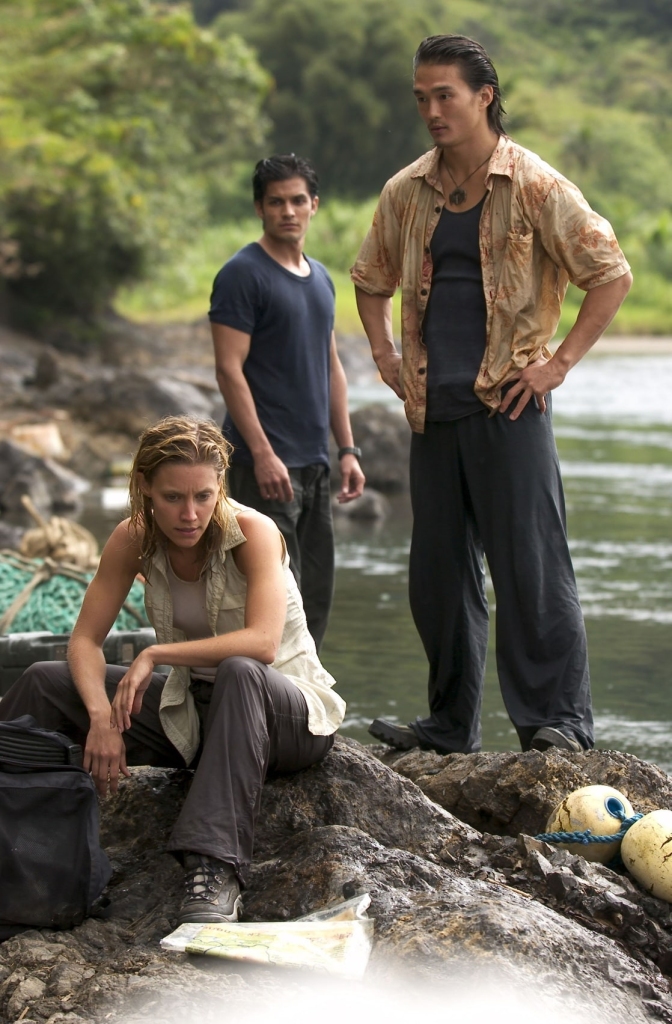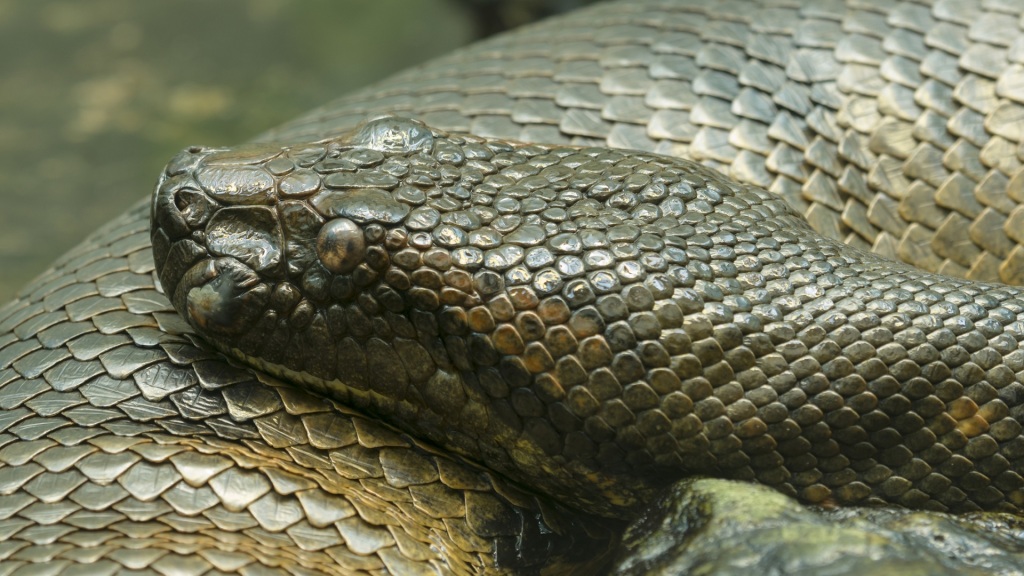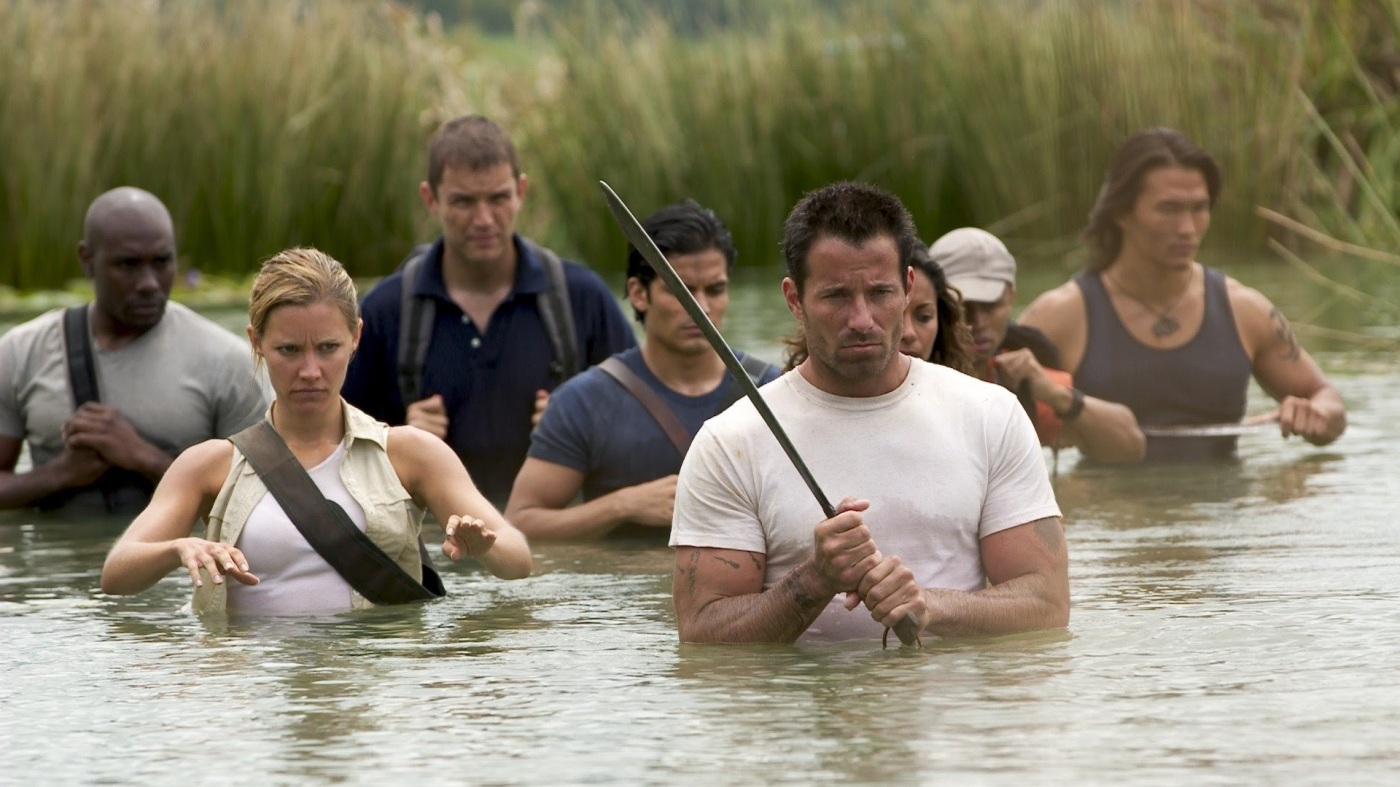After years of inexplicably recoiling whenever we see snakes, scientific research has finally explained why people have such an aversion to these reptiles. Basically, it’s part of our evolution. By learning to recognize and fear snakes, humans had a better chance at survival throughout history. But if you ask me why everyone is so scared of snakes, I’d argue it’s because there’s a species that can reach thirty-feet in length currently living among us. Well, not most of us as the infamous green anaconda is isolated to South America. Or so we think.
Enter Anacondas: The Hunt for the Blood Orchid.
In this standalone sequel to the 1997 movie Anaconda, starring Jennifer Lopez and Ice Cube, American researchers funded by a pharmaceutical company are in search of the near-mythic Perrinia immortalis — the Blood Orchid — in Borneo. It’s believed this flower is an all-in-one cure for every disease from “the common cold to cancer.” However, the orchid only blooms for six months every seven years. Which means a crack team of scientists must now voyage to Borneo before it’s too late. As luck would have it though, it’s flood season, and no boat is willing to take them to the flower’s secluded location. That is until they meet a local named Bill Johnson who agrees to escort them at a hefty price.
The trip takes a sudden detour once Bill‘s boat nosedives off a waterfall. The crew is left stranded in the middle of the jungle with no means of escape other than to hike their way back to civilization. Sadly for them, they’re smack dab in the middle of anaconda copulation en masse. Can you guess where that “mating ball” is taking place? That’s right. To get to the Blood Orchid, Bill and his party are all going to have to enter the lair of the amatory snake.
After serving as a producer for the 1997 film, Verna Harrah returned for Anacondas: The Hunt for the Blood Orchid because she wanted to expand on the original movie. The initial idea was to have the sequel be set in New Orleans — with the snakes having been brought over by a boat from the Amazon — but that would have been too expensive. So, they decided to keep the sequel in the jungle.

With director Dwight H. Little (Halloween 4: The Return of Michael Myers) on board, the cast and crew spent 55 days in Fiji between August and October of 2003. It might have made sense to shoot on-location in Borneo, but the Sony Pictures production opted for Fiji for several reasons. In addition to an idyllic locale, an accommodating government, and plentiful tax incentives, Fiji provided a safe work environment. Harrah remarked they could film in a jungle without the fear of warfare or terrorism.
Jennifer Lopez had become a household name since the first movie so it was of no surprise she wasn’t in the sequel (Little jokes that Lopez is “very expensive”). This meant they needed a cast of fresh faces and potential victims for the film’s gargantuan serpents to feast on. Leading the pack was Johnny Messner as Bill Johnson, the ruggedly handsome boatman with a past who offers his services to the desperate pharmacologists. He’s joined by The Grudge‘s KaDee Strickland as the Southerly accented researcher Sam Rogers, and Salli Richardson-Whitfield (I Am Legend) as Gail Stern, a city-bred scientist well out of her element.
Rounding out the cast — Matthew Marsden (Resident Evil: Extinction) as Dr. Jack Byron, a British snake in the grass; Eugene Byrd as resident computer geek Cole Burris; Morris Chestnut (The Cave) as financial adviser Gordon Mitchell; Nicholas Gonzales (The Purge: Anarchy) as the flirty doctor without boundaries Ben Douglas; and Karl Yune (The Invitation) as Bill‘s right-hand man Tran Wu.
Anacondas: The Hunt for the Blood Orchid opened in 2,900 U.S. theaters on August 27, 2004 with a weekend gross of $12 million. Critics were generally unkind — Ben Kenigsberg of The Village Voice called it a “bottom feeder” — while audiences were slightly more forgiving. With international sales, the movie went on to earn a box office total of $71 million against a $25 million budget.

Sony Pictures Home Entertainment later revived the franchise with three straight-to-video sequels — Anaconda 3: Offspring (2008), Anacondas: Trail of Blood (2009), and a crossover movie called Lake Placid vs. Anaconda (2015) — that all premiered on Syfy née the Sci-Fi Channel.
To create the absurdly agile and sinuous snakes in the movie, the effects team combined practical with digital. After all, the real-life green anaconda is incredibly slow next to its big-screen counterpart. So, Little and his designers studied other types of snakes — among them, pythons and rattlesnakes — to help augment the anaconda’s innate characteristics. Make them appear more “awake and alive.”
Besides the need to have the film’s namesakes be faster and stronger, visual effects supervisor Dale Dugid said they ultimately found the anacondas needed to look… well, less anaconda-ish. They believed the snakes’ actual heads looked “bizarre and comical” regardless of their fearsome nature.
The reptilian villains of Anacondas: The Hunt for the Blood Orchid aren’t timeless-looking. The movie’s digital technology used back then looks downright dated by today’s standards. However, Dugid clarifies that CGI was the only way to convey the “speed and violence” of the anacondas; real snakes just don’t move or behave like this. For the sake of undiluted pleasure, though, these gigantic nope ropes can reach their fullest, apex predator potentiality thanks to ambitious stunt work and preposterous maneuvering.

The sequel isn’t as serious as its predecessor, but you’ll eventually feel sated by the mingling of sheer lunacy and excessiveness. Right off, we are no longer in the Amazon. The writers have taken the liberty of inexplicably relocating anacondas from their natural habitat to gorgeous Borneo, an island in Southeast Asia. It’s a creative choice that will surely annoy herpetologists. Alas, the protagonists’ search for the fictional Blood Orchid transforms into a jocular journey of setback after setback. Not only are they at each other’s throats for the majority of the movie, they now have misplaced anacondas on their tails.
This ensemble of intrepid yet bungling players is built on familiar tropes. Bill is the enigmatic jack of all trades, master of none; Sam is the naïve love interest of several other characters who never really develops her own personality; Gail, an urban dweller and sometimes damsel in distress who is openly hostile towards her younger, female colleague. Everyone else hardly leaves a carbon footprint in terms of development. But does any of this matter? As Johnny Messner said in a candid and career-plummeting interview in 2004 — “This is not The English Patient.” No, that it ain’t.
The first act of the movie plods along like Bill‘s crummy boat. Other than a man-on-crocodile brawl in the water that resembles a bucking bronco match, nothing truly interesting happens. To make matters worse, the characters are cardboard thin and generally off-putting. Luckily for us at home, all it takes for Anacondas to get going is a fateful run-in with a waterfall. Might I add this is a skillfully carried out feat for the effects staff. Kudos.
Now that the gang is stuck on dry land, they’re easier to pick off. Although it’s really just a few anacondas that are pursuing them. The rest are too preoccupied with the “snake orgy out in the jungle.” Yep, you read that right. This stuff doesn’t write itself, folks. Like the previous film, there’s a mild sexual undercurrent in the sequel. While it never amounts to anything more than some suggestive glances and winks, there is a blink-and-you’ll-miss-it moment where two characters obviously hooked up off-screen. Can’t blame the writers considering how objectively attractive this cast is. And lest we forget that pit of ophidian coitus seen in the movie’s climax. Oh yes, the pun is definitely intended.

For the remainder of the film, the anacondas act like Piranha Plants that pop up when you already expect them to. It’s not at all realistic in behavior or appearance. But at a certain point, you gotta abandon any hope for realism. You’re better off acknowledging this movie for what it is — a furious ball of scaly delight where the filmmakers’ only goal is to keep you entertained.
Creature features aren’t as prominent as they used to be. Not even on cable television. Interest in man-eating animals has waned likely due to a general shift in horror. Flicks about mad science and mutant fauna came to be in an age of ecological concern. Not that we’re out of the woods yet in that regard; eco-horror has simply been pushed out of the limelight. At least for now. Anacondas is a short-order return to form for creature features without the heavy undertone of past films. One could argue it’s about humanity’s continued comeuppance when they mess with the natural order of life. In this case, I don’t think it’s all that deep.
What the film lacks in individuality and spontaneity, it makes up for in witless entertainment. Sure, it could have leaned harder into total insanity. And less cookie-cutter characters would’ve made the sedated beginning more bearable. On the other hand, it’s astounding how amusing the movie is in spite of some glaring problems. The crew and cast had a blast making the film — and their enthusiasm yields a fun end result.
So, don’t hang your head in shame because you like this movie. Instead, raise it high and let out a hiss of relief. For there are plenty others out there who return to Anacondas: The Hunt for the Blood Orchid for no reason other than it being the best kind of innocuous, diverting entertainment.
This article was originally posted at Nightmare on Film Street in 2019, but it has since been removed.


Leave a comment